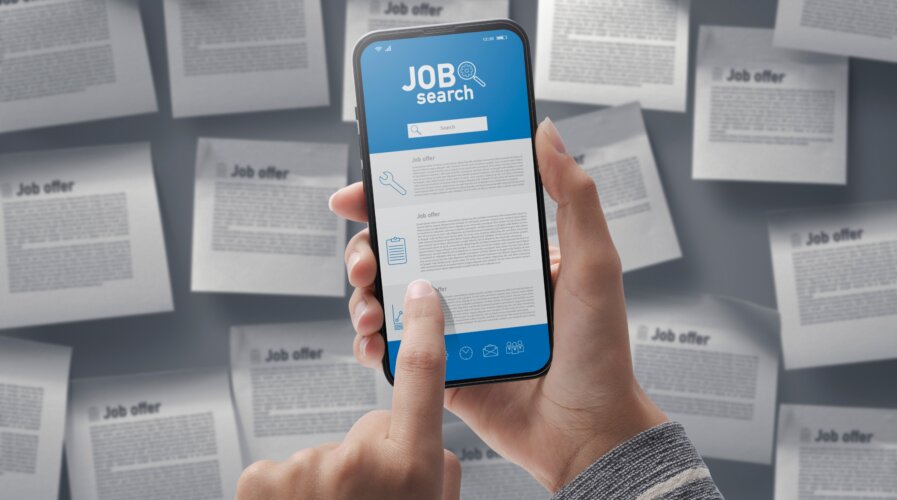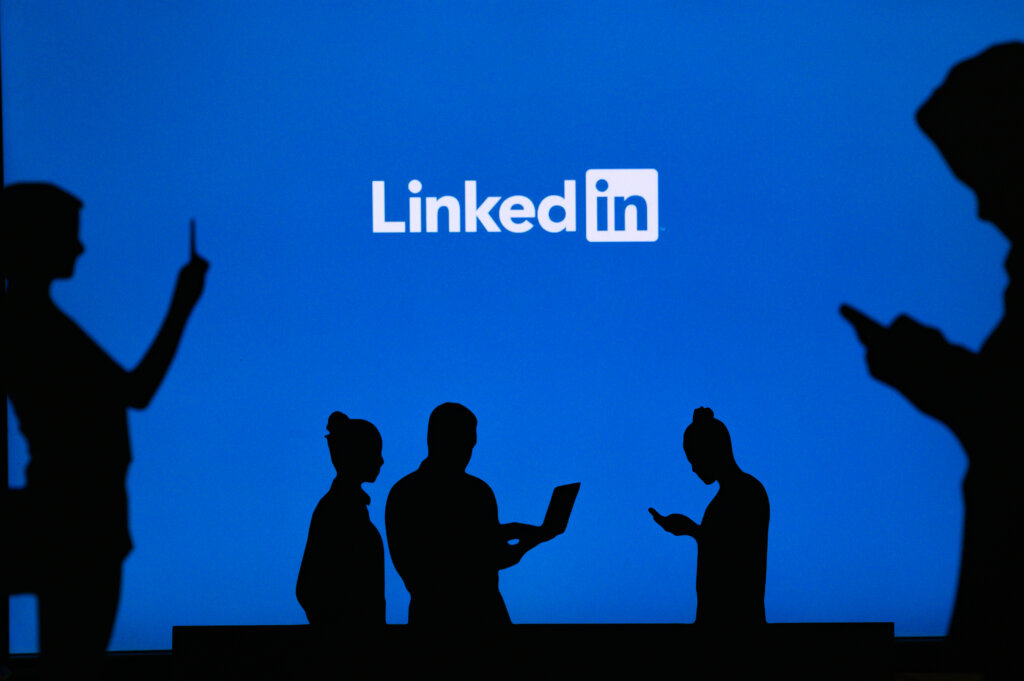
(Source – Shutterstock)
Inside LinkedIn’s battle against sophisticated job scams
Job scams are a big problem today because they prey on vulnerable individuals and can have serious financial, emotional and social consequences. Jobseekers are always advised to be vigilant and take steps to protect themselves from these types of scams.
However, many still fall victim to job scams despite taking precautions. This is mainly because of the promised opportunity that awaits or an act of desperation to get a role at a desired organization. In Southeast Asia, job scams are becoming such a huge problem that its leading to human trafficking activities as well.
According to a report by Reuters, Southeast Asian leaders have pledged to crack down on online job scams operated by human traffickers. These scams prey on vulnerable job seekers, particularly those in the poorest countries in the region.
Issuing the first declaration by ASEAN on the danger of traffickers’ cyber scams, the leaders noted “the increasing abuse of technology in facilitating trafficking in persons in Southeast Asia and globally, proliferated through the use and abuse of social media and other online platforms”.
ASEAN’s efforts to combat human trafficking will include enhancing the capacity of law enforcement agencies to investigate, collect data, exchange information and conduct joint exercises, the declaration said.
Apart from governments taking action in dealing with job scams, LinkedIn is also ensuring it plays an active role in detecting and reducing the number of job scams on its platform. As job scams are becoming more sophisticated, the business and employment-focused social media platform is now leveraging emerging technologies like AI to help detect and deal with job scams.
To understand more about how LinkedIn is battling job scams and the technology it is using to achieve this, Tech Wire Asia speaks to Oscar Rodriguez, Vice President, of Product Management at LinkedIn.

What is the biggest challenge for LinkedIn and job seekers when battling job scams?
There has been a rise in fraudulent activity across the internet in general, targeting a wide range of people. However, with fears around economic uncertainty and concerns for job security, we see that scammers are taking advantage of this and increasing fraudulent activities targeting job seekers. Also, when you look at spam and scam content – which includes inappropriate commercial activity and repetitive communications or invitations that could be for financial gain – it’s the most common type of violative content we see globally.
Scammers and fraudsters are becoming more sophisticated each day, and they’re constantly evolving their strategies to deceive and scam people. When you look at spam and scam content on LinkedIn – which includes inappropriate commercial activity and repetitive communications or invitations that could be for financial gain – it’s the most common type of violative content we remove. Some scammers may use a practice called phishing to try to obtain sensitive data such as usernames, passwords, and credit card information. These fraudsters impersonate legitimate companies or people, sending messages and links that attempt to direct you to false websites to collect this information.
Can you share some statistics on the number of scams discovered?

Oscar Rodriguez, Vice President, of Product Management at LinkedIn
I can share that we know there has been an increase in the sophistication of fraudulent activity across the internet, including here on LinkedIn. Fraudsters are constantly evolving their strategies to deceive and scam people. This is why keeping our platform trusted and professional is an ongoing priority for us and we will continue educating members, enhancing our automated systems, and rolling out new features to support authentic experiences.
LinkedIn uses emerging tech like AI to help enhance our members’ experience on the platform. Our automated systems pair AI with teams of experts to stop the vast majority of detected fake accounts before they appear in our community. You’ll see in our transparency report that 96% of detected fake accounts and 99.1% of detected spam and scams are caught and removed by our automated defenses.
There have been reports of phishing activities on LinkedIn as well. How has the company dealt with this?
Technological developments have provided scammers with several ways to deceive people, and phishing is one of them. We are continuously working on educating members about the necessary steps they should take to stay safe from phishing. We encourage members to protect themselves by enabling two-factor authentication and to report suspicious messages to us. Our internal teams relentlessly work to take action against those who attempt to harm LinkedIn members through phishing. Within Linkedin Recruiter, companies caught violating our terms and conditions are suspended as a step to keep job seekers on the platform safe.
Given the increasing sophistication of the internet, job scams require a strong, robust tech ecosystem in place. What steps has LinkedIn taken toward this?
At LinkedIn, we use sophisticated tech like AI, machine learning, and a new deep-learning-based model, paired with teams of experts, to proactively detect probable harmful behavior, and fake profiles, which helps us take quick action to protect our members.
- Investing in our teams, tools and technology to mitigate the risk of fake accounts. This includes strengthening our defenses at every touchpoint, beginning with improving our registration defenses and challenges – which allows us to prevent bad actors from creating fake accounts at scale. We’re also enhancing our current defense models, making them faster and more effective, and also improving our in-product messaging and warnings to members so they can also help keep themselves safe. Last week we announced new, free verification features in the US for members including the ability for some members to verify their work email addresses. While this isn’t yet available to all members we are already working to expand availability and unlock new ways to verify.
- We’ve also created a deep learning model to efficiently catch profiles made with AI-based synthetic image generation technology. AI-based image generators can create numerous unique, high-quality profile photos that do not correspond to real people. Fake accounts sometimes use these convincing, AI-generated profile photos to make their fake LinkedIn profile appear more authentic.
- Our community guidelines are reinforced firmly to keep members safe from inappropriate experiences. We have updated our automated tools to detect potentially harmful behavior and warn members when engaging via private messaging. If a potentially harmful message is detected, it will either go directly to your spam folder or be hidden with a warning. If either happens, we’ve also made it easier for members to report it and for our teams to take action. With an optional advanced safety feature that, when enabled, displays warnings on LinkedIn messages that are suspected of containing high-risk or potentially harmful content, we’ve provided our members with an extra layer of security on the platform.
We also know that relying solely on technology is not enough. LinkedIn’s community policies do not tolerate inappropriate activities or behavior such as spam, harassment, and scams. We also believe in the importance of educating people about how to identify potential threats, what can go wrong, and how to report suspicious activities. By working together, we can create a safer and more secure online environment for all.

(Source – Shutterstock)
Are there plans to leverage AI technologies such as advanced networks, computer vision and natural language processing algorithms for anomaly detection with fake profiles and communities?
While conversations about emerging tech have recently surfaced, AI is not new to us. For over 15 years, LinkedIn has used emerging tech such as AI to help enhance our members’ experience on the platform.
We recently introduced a new deep-learning-based model which proactively checks profile photo uploads to determine if the image is AI-generated. This model uses cutting-edge technology designed to detect subtle image artifacts associated with the AI-based synthetic image generation process without performing facial recognition or biometric analyses. This technology will enhance our automated anti-abuse defenses to help detect and remove fake accounts before they reach our members.
Can you share how newly added features such as profile verification help verify member details associated with the account?
Authenticity is key to creating meaningful interactions. Having verified information provides authenticity signals to others and helps foster a trusted community on our platform. LinkedIn currently supports several forms of verifications:
- Work email verification – The individual can confirm their work email to the specific company listed on their profile. This feature is launched globally but is available for select companies.
- ID verification – The individual’s government-issued ID will be verified by one of LinkedIn’s verification partners. This is available in the US for those with a valid government-issued ID and a US phone number. LinkedIn is looking to expand ID verification globally and add more verification partners in the future.
- Workplace verification – The individual can verify that he/ she had a workplace account with the company listed on their LinkedIn work experience by going through the company’s authentication process. This feature is also launched globally but is also only available for select companies.
READ MORE
- 3 Steps to Successfully Automate Copilot for Microsoft 365 Implementation
- Trustworthy AI – the Promise of Enterprise-Friendly Generative Machine Learning with Dell and NVIDIA
- Strategies for Democratizing GenAI
- The criticality of endpoint management in cybersecurity and operations
- Ethical AI: The renewed importance of safeguarding data and customer privacy in Generative AI applications


